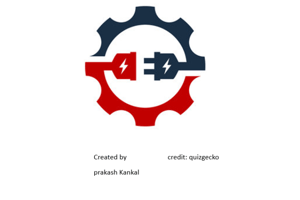Podcast
Questions and Answers
What are the two most common elements of a semiconductor diode?
What are the two most common elements of a semiconductor diode?
Silicone and germanium
Diodes allow current to pass through them:
Diodes allow current to pass through them:
- When no bias exists
- When they are reversed biased
- When they are forward biased (correct)
- All of the above
How does the forward current in a semiconductor diode change?
How does the forward current in a semiconductor diode change?
Increases with an increase in bias voltage
What is threshold voltage?
What is threshold voltage?
What happens if a semiconductor diode remains at peak-inverse voltage for a period of time?
What happens if a semiconductor diode remains at peak-inverse voltage for a period of time?
A zener diode operates in what kind of bias?
A zener diode operates in what kind of bias?
When does the voltage across a zener diode remain constant?
When does the voltage across a zener diode remain constant?
In comparison to a standard diode, when is a zener diode's breakdown voltage established?
In comparison to a standard diode, when is a zener diode's breakdown voltage established?
What is the primary function of a zener diode?
What is the primary function of a zener diode?
What is a rectifier?
What is a rectifier?
What is ripple in the context of power supply?
What is ripple in the context of power supply?
What is a half wave rectifier?
What is a half wave rectifier?
What is a full wave rectifier?
What is a full wave rectifier?
What is a full wave bridge rectifier?
What is a full wave bridge rectifier?
How many diodes does a full wave rectifier use?
How many diodes does a full wave rectifier use?
What type of transformer is used in a full-wave rectifier?
What type of transformer is used in a full-wave rectifier?
Is the full wave rectifier's output more smooth than the half-wave rectifier?
Is the full wave rectifier's output more smooth than the half-wave rectifier?
What is Ripple Factor?
What is Ripple Factor?
Circuits that provide conversion of AC to DC are known as?
Circuits that provide conversion of AC to DC are known as?
What is the simplest rectifier circuit?
What is the simplest rectifier circuit?
A full-wave rectifier's output is ______ compared to a half-wave rectifier.
A full-wave rectifier's output is ______ compared to a half-wave rectifier.
Half-wave rectifiers cost the least but have the highest ripple?
Half-wave rectifiers cost the least but have the highest ripple?
What does a full wave rectifier circuit use?
What does a full wave rectifier circuit use?
What is a half-wave rectifier circuit?
What is a half-wave rectifier circuit?
How many diodes does a full wave bridge rectifier use?
How many diodes does a full wave bridge rectifier use?
How often is the full-wave bridge rectifier used?
How often is the full-wave bridge rectifier used?
What is ripple?
What is ripple?
Which rectifier has the highest ripple factor?
Which rectifier has the highest ripple factor?
Flashcards are hidden until you start studying
Study Notes
Semiconductor Diodes
- Common elements in semiconductor diodes are silicon and germanium.
- Diodes conduct current primarily when forward biased; they do not conduct under reverse bias or when no bias is applied.
- Forward current in a semiconductor diode increases as bias voltage rises.
- Threshold voltage marks the point where current begins to increase sharply.
Diode Operations and Characteristics
- Prolonged exposure to peak-inverse voltage can produce heat that damages a diode.
- Zener diodes operate in reverse bias and can regulate voltage, maintaining a constant output before reverse breakdown occurs.
- The breakdown voltage for a zener diode is established long before the diode reaches its operational limits.
Rectification Processes
- A rectifier converts alternating current (AC) to direct current (DC) by allowing current to flow in a single direction.
- Ripple refers to residual AC voltage present in the output of power supplies, showing an AC component on top of the DC output.
- Half-wave rectifiers utilize a single diode, only conducting during positive alternations of the AC input.
- Full-wave rectifiers employ two diodes, conducting for each alternation of the AC input, producing a DC pulse with both halves of the waveform.
- Full-wave bridge rectifiers involve four diodes arranged in a bridge configuration, effectively rectifying both halves of the AC cycle.
Rectifier Configurations
- Full-wave rectifiers output smoother DC compared to half-wave rectifiers.
- The ripple factor measures the ripple voltage relative to the DC voltage, calculated as (amount of ripple / DC output level) x 100.
- Half-wave rectifiers, though low-cost, exhibit the highest ripple factor.
- Full-wave rectifiers incorporate two diodes and typically utilize a center-tapped transformer.
- The half-wave rectifier is the simplest rectifier circuit, consisting of a resistor-diode combination connected to an AC source.
Usage and Applications
- Full-wave bridge rectifiers are widely used in various applications due to their efficient voltage conversion capabilities.
- Among rectifiers, half-wave rectifiers present the highest level of ripple, making them less suitable for applications requiring smooth DC output.
Studying That Suits You
Use AI to generate personalized quizzes and flashcards to suit your learning preferences.




